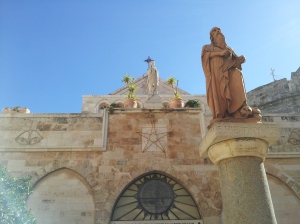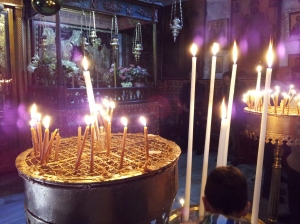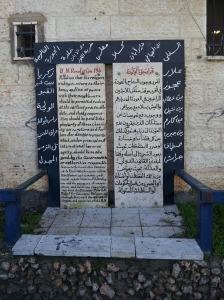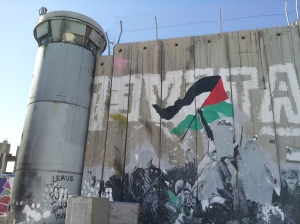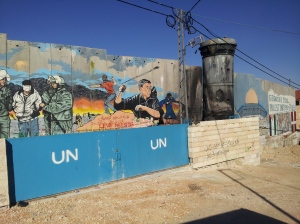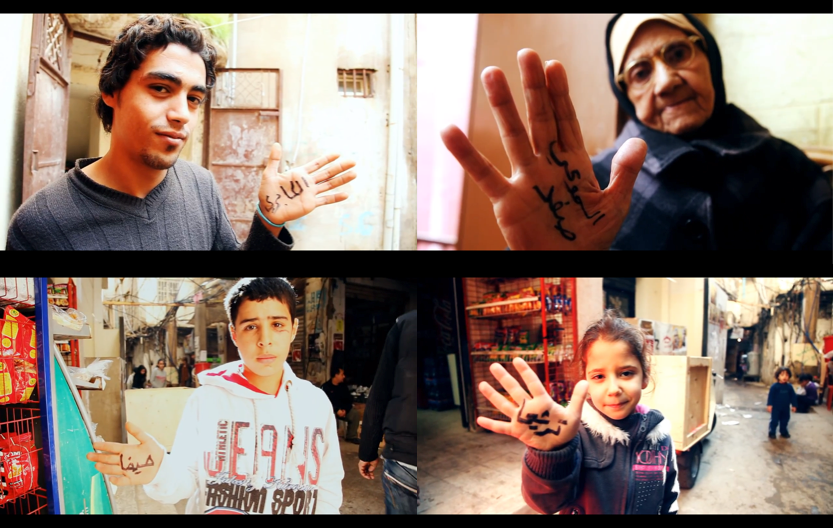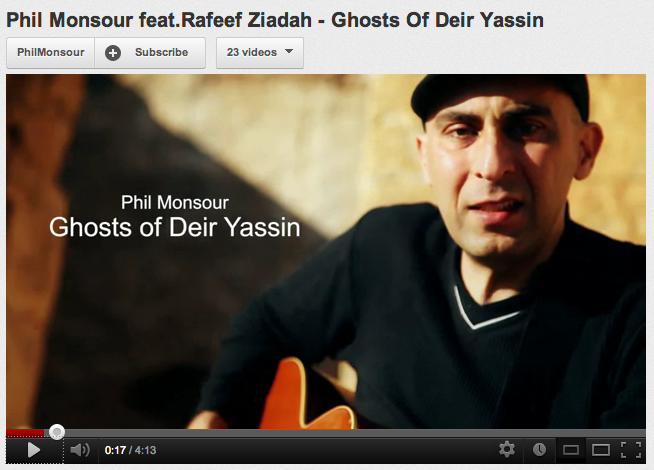A Tour around Bethlehem
Day 1 – A tour around Bethlehem
In Aramaic and Hebrew, ‘Bethlehem’ Means House of Bread. Being the birthplace of King David, Bethlehem was already a significant and historical city by the time of Jesus. Travelling from nearby Beit Sahour, our guide took us to Manager Square and the Church of the Nativity, explaining it’s history from founding in the 4th century to today.
Steeped in history, you have to stoop through a deliberately low door to enter- our guide telling us that the pre-existing tall doorway had been lowered to prevent tax collectors on horseback entering, and also ensuring that all those entering would have to bow their heads in the process! Inside one appreciates a sense of deep history of the place. The traditional birth-place of Jesus is in a grotto below the church, as is the cave where St Jerome stayed to create the Vulgate translation of the Bible. Outside in a courtyard we were shown bullet hoes where Israeli forces had laid siege to the Church, killing several of those who took sanctuary within.
We were taken on a tour of Dheishah refugee camp, one of four such camps in Bethlehem. Most of the occupants of the camp were those families evicted from their homes in Palestine in 1948 by Jewish forces when the State of Israel was created, turning 750,000 people into refugees. Today, Dheishah camp has a population of 13,000 people, living in 1 square kilometre. From 1948 till today Israel has consistently refused to negotiate or compensate the refugee families, despite United Nations Resolution 194, which defines the Right of Return of all peoples of the conflict.
We visited the Separation Wall which snakes around enclosing the Bethlehem area and into Bethlehem itself. At intervals along the 24foot high structure there are watch towers, cameras and other surveillance equipment. One large area of Bethlehem is encased like a box, inside which is Rachel’s Tomb, accessible to visiting Israelis only. Covered in colourful graffiti which convey message of hope and peaceful resistance, including contributions by UK street artist Banksy, it is clear how the structure received it’s more usual name of the Apartheid Wall.
In the evening we were given a screening of the film The Iron Wall which documents the creation and construction of the Separation Wall, created by Israel. Now some 760km long, the Wall consists of a 24 feet (8 metre) high concrete structure and electrified fence which twists and turns rather than following the recognised 1967 ceasefire line which is the internationally recognised separation line between Israel and the West Bank – which is only 360km long. Rather than follow the border, the wall is mainly built on Palestinian land and annexes valuable farmland, water wells and settlements, often separating Palestinian villages from their own farm lands. The film was very moving as well as informative.
